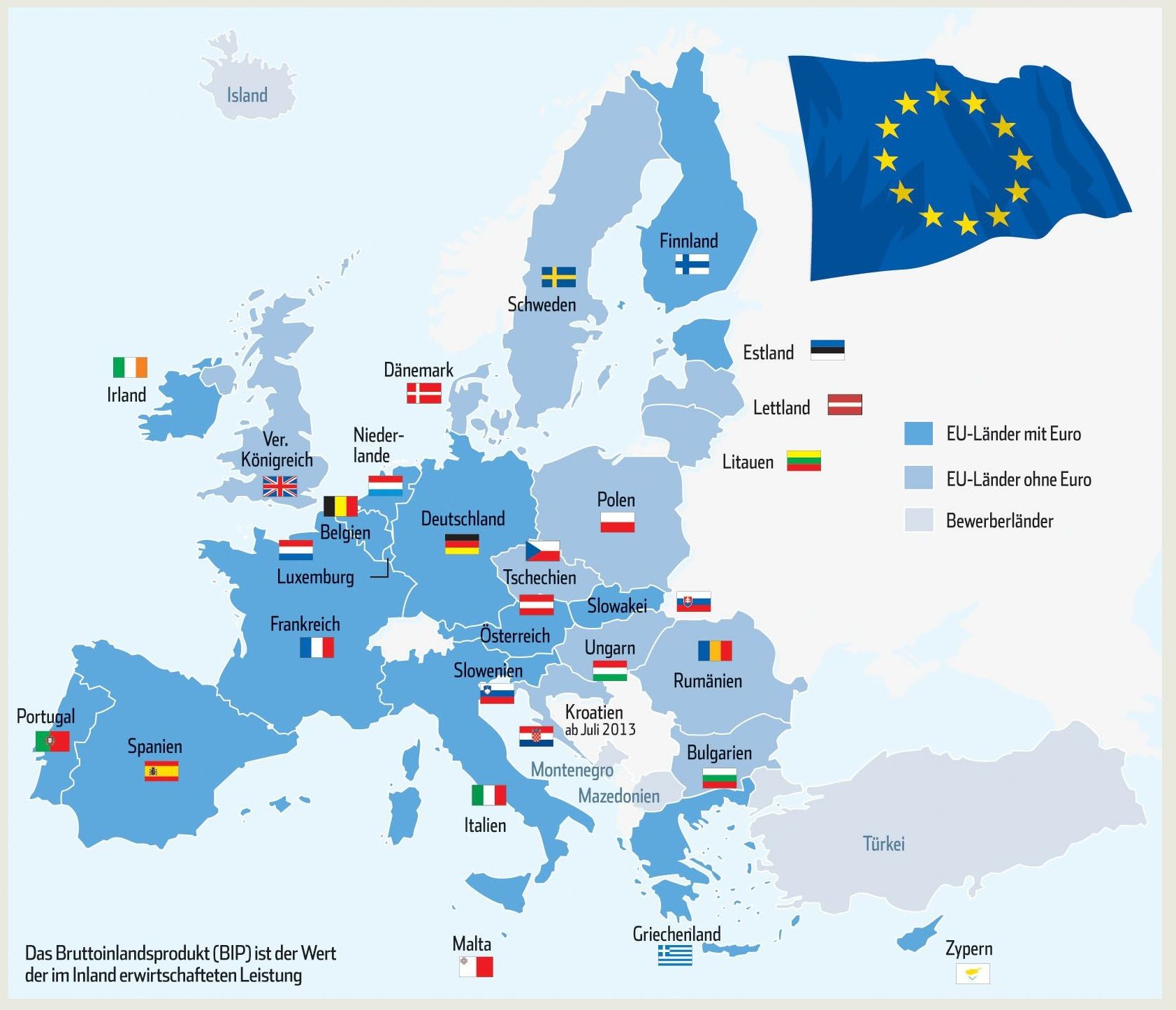
漢德百科全書 | 汉德百科全书
 Party and government
Party and government
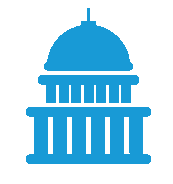



Die Europäische Volkspartei (EVP; französisch Parti populaire européen, PPE, englisch European People’s Party, EPP) ist eine europäische politische Partei, die sich aus christlich-demokratischen und bürgerlich-konservativen bis hin zu nationalkonservativ-rechtspopulistischen Mitgliedsparteien in der Europäischen Union zusammensetzt. Daneben gehören Parteien aus nicht-EU-Ländern der EVP als assoziierte oder beobachtende Mitglieder an. Aus dem deutschen Sprachbereich sind die CDU und die CSU aus Deutschland, die ÖVP aus Österreich, die CSV aus Luxemburg sowie die CSP aus Belgien Mitglieder der EVP; die Schweizer CVP ist assoziiertes Mitglied und die Südtiroler Volkspartei hat Beobachterstatus.
Die EVP wurde 1976 von hauptsächlich christlich-demokratischen Parteien gegründet. Sie hat die Form einer internationalen Vereinigung ohne Gewinnerzielungsabsicht belgischen Rechts. Die EVP ist eine von drei europäischen Regionalabteilungen der Internationalen Demokratischen Union (IDU).
Im Europäischen Parlament stellt die EVP mit der Fraktion der Europäischen Volkspartei (Christdemokraten) die seit 1999 größte Fraktion. Derzeit gehören 216 Abgeordnete der EVP-Fraktion an, darunter auch einige, die nicht der EVP angehören (Stand: 30. Mai 2019[1]). Daneben bestehen auch EVP-Fraktionen im Ausschuss der Regionen der EU sowie in den parlamentarischen Versammlungen in anderen transnationalen Organisationen wie dem Europarat, der OSZE oder der NATO. In der Legislaturperiode 2014–2019 stellt die EVP 14 Mitglieder der Europäischen Kommission (einschließlich des Kommissionspräsidenten) und den Präsidenten des Europäischen Rates.
欧洲人民党(英语:European People's Party,缩写为EPP)成立于1976年,是欧盟最大的跨国中间偏右政党。欧洲人民党结合了欧洲的中间偏右基督教民主党与保守党。目前欧洲人民党是欧洲议会的第一大党。
欧州人民党(おうしゅうじんみんとう、EPP)は、1976年創設の欧州規模の政党。欧州議会では欧州人民党に参加する各国内政党のほか、中道右派やキリスト教民主主義系の無所属議員で会派「欧州人民党グループ」を形成している。欧州人民党には、欧州諸国中40か国の保守主義政党およびキリスト教民主主義政党のうち、74の政党が加盟している。
現在の党議長は、ベルギー元首相のウィルフリート・マルテンス。2006年のローマ大会で再選された。任期は3年。ローマ大会では、副議長として、ミシェル・バルニエ(フランス、国民運動連合)、ユルキ・カタイネン(フィンランド、国民連合党)、ロイゼ・ペテルレ(スロベニア、スロベニア人民党)、オルバン・ヴィクトル(ヴィクトル・オルバン、ハンガリー、フィデス=ハンガリー市民同盟)、ペーター・ヒンツェ(ドイツ、キリスト教社会同盟)、Enda Kenny(アイルランド、フィネ・ゲール)、ヤツェク・サリウシュ=ヴォルスキ(ポーランド、市民プラットフォーム)が選出された。
The European People's Party (EPP) is a European political party with conservative[6] and liberal-conservative[2] member parties. A transnational organisation, it is composed of other political parties, not individuals. Founded by primarily Christian democratic parties in 1976, it has since broadened its membership to include liberal-conservative parties and parties with other centre-right political perspectives.[7][8][9][10]
The EPP has been the largest party in the European Parliament since 1999 and in the European Council since 2002. It is also by far the largest party in the current European Commission. The President of the European Council, President of the European Commission and the President of the European Parliament are all from the EPP. Many of the Founding fathers of the European Union were also from parties that later formed the EPP. Outside the EU the party also controls a majority in the Parliamentary Assembly of the Council of Europe. The EPP has alternated with its centre-left rival the Party of European Socialists (PES) as the largest European political party and parliamentary group.
The EPP includes major centre-right parties such as the CDU/CSU of Germany, The Republicans of France, CD&V of Belgium, KDU-ČSL of the Czech Republic, Fine Gael of Ireland, New Democracy of Greece, Forza Italia of Italy, the People's Party (PP) of Spain, the Social Democratic Party of Portugal, the Civic Platform of Poland but also Fidesz of Hungary.
Le Parti populaire européen (PPE/EPP) est un parti politique européen, regroupant à l'échelle du continent un ensemble de partis de droite et de centre droit d'inspiration démocrate chrétienne et libérale-conservatrice, disposant d'un groupe au Parlement européen et à l'Assemblée parlementaire du Conseil de l'Europe.
Fondé en 1976, le PPE compte plus de 70 partis membres de 40 pays différents, de nombreux chefs d'État et de gouvernement provenant de pays membres de l'Union européenne, treize membres de la Commission européenne, dont le président du Conseil européen, ainsi que le groupe le plus important au sein du Parlement européen. Le PPE se décrit comme « une famille se situant au centre droit de l'échiquier politique, dont les racines puisent dans l'histoire et la civilisation du continent européen et qui a, dès l'origine, œuvré pour le projet européen ».
Il Partito Popolare Europeo (acronimo PPE) è un partito politico europeo. È la famiglia politica europeista di centro e di centro-destra che raccoglie le forze generalmente classificabili come moderate, cristiano-democratiche e conservatrici.
Oltre ad essere il maggiore partito rappresentato in ciascuna delle istituzioni dell'Unione europea ed anche il più ampio del Consiglio d'Europa, è il più influente dei partiti europei ed è il più grande gruppo politico nel Parlamento europeo con 216 eurodeputati. Attualmente tutte e tre le cariche rappresentative dell'Unione Europea (il presidente del Consiglio europeo, il Presidente della Commissione europea ed il presidente del Parlamento Europeo) sono rappresentate da esponenti del PPE.
Fondato nel 1976 da partiti cristiano-democratici, ispiratisi all'azione degli statisti europeisti De Gasperi, Adenauer e Schumann nel secondo dopoguerra, successivamente ha visto l'adesione anche di soggetti appartenenti all'area di centro-destra. Tuttavia i partiti membri hanno collocazioni politiche diverse nei singoli Paesi (nella maggior parte dei casi alternative alla sinistra, ma in altri casi alleati di governo con partiti di centrosinistra, in altri ancora distinti sia dalla sinistra che dalla destra).
Il PPE raggruppa 73 partiti membri provenienti da 39 Paesi, di cui 27 sono membri dell'UE. Fra questi ritroviamo vari partiti importanti come IR in Francia, la CDU in Germania, FI in Italia, PO in Polonia ed il PP in Spagna.
È il primo partito nel Parlamento europeo dal 1999, nel Consiglio europeo dal 2002 e nell'attuale Commissione europea. Alcuni dei padri fondatori dell'Unione europea appartenevano a partiti che sono successivamente entrati a far parte del PPE.
El Partido Popular Europeo (en inglés European People's Party, abreviado EPP) es un partido político europeo de centroderecha y proeuropeo. Fue fundado en 1976 por partidos demócrata-cristianos, pero posteriormente ha ampliado su composición para incluir a conservadores y otras perspectivas de centroderecha.13
El PPE es el principal partido de la Unión Europea (UE), con más de 200 diputados en el Parlamento Europeo, todos ellos presentes en el Grupo del Partido Popular Europeo. Además cuenta con 14 miembros de la Comisión Europea, incluido el presidente Jean-Claude Juncker, y 7 en el Consejo Europeo, además de su presidente.456
Con 75 partidos repartidos en 40 países de Europa, controla 10 estados de todo el continente y cuenta con el mayor grupo de la Asamblea Parlamentaria del Consejo de Europa, con más de 190 miembros en el Grupo del Partido Popular Europeo.78
El PPE incluye partidos tan importantes como la Unión Demócrata Cristiana de Alemania, Los Republicanos de Francia o el Partido Popular de España, y cuenta con miembros en todos los estados miembros de la Unión Europea salvo el Reino Unido.2
Европе́йская наро́дная па́ртия (ЕНП) — правоцентристская общеевропейская политическая партия, основанная в 1976 году. Включает в себя христианско-демократические и консервативные партии стран Европы.
ЕНП — одна из крупнейших партий Европы, представленная во всех политических институтах Европейского союза, а также в Совете Европы. Партия включает в себя 73 коллективных члена, национальные партии из 39 стран.
Согласно их странице в Интернете ЕНП это «объединение политического центра, чьи корни лежат в глубинах истории европейской цивилизации. Она объединяет национальные партии с близкой идеологией в государствах-членах и ассоциированных членах ЕС, а также поддерживает близкие контакты со странами — возможными кандидатами».
ЕНП включает в себя 16 глав правительств стран — членов Европейского союза и 6 глав правительств стран, не входящих в ЕС, также 13 членов Европейской комиссии (в том числе председателя Комиссии), председателя Европейского совета, председателя Европейского парламента и крупнейшую фракцию в Европейском парламенте, которая состоит из 265 членов. С 2013 года президентом EPP является депутат Европарламента Жозеф Доль.
Европейская народная партия имеет молодёжное отделение, Молодёжь Европейской народной партии (англ. YEPP). Европейские студенты-демократы (англ. EDS) — группа студенческих политических партий, ассоциированная с ЕНП.
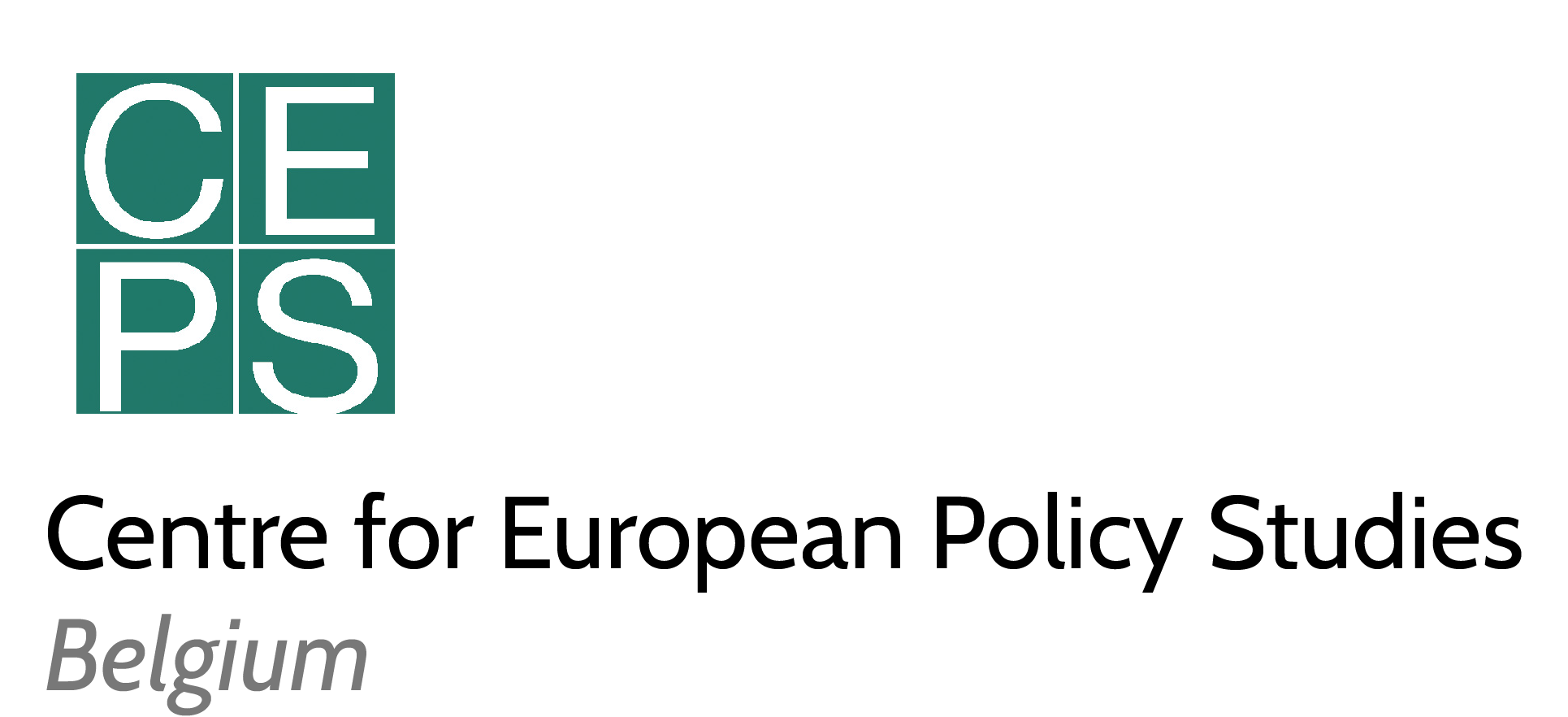



Die Fraktion der Allianz der Liberalen und Demokraten für Europa (ALDE) war von 2004 bis 2019 eine Fraktion im Europäischen Parlament. Auch in der Parlamentarischen Versammlung des Europarats, im Ausschuss der Regionen sowie in der Parlamentarischen Versammlung der NATO bestehen Fraktionen dieses Namens.
Die ALDE-Fraktion im Europäischen Parlament bestand aus den Abgeordneten der liberalen ALDE-Partei, ehemals Europäische liberale demokratische und Reformpartei (ELDR), der liberale Parteien angehören, und der Europäischen Demokratischen Partei (EDP), einer Vereinigung von Zentrumsparteien. Von 2004 bis 2014 war sie drittgrößte Fraktion, von 2014 bis 2019 viertstärkste Gruppe des Parlaments. Zuletzt umfasste die ALDE-Fraktion 67 Mitglieder aus 21 Ländern. Vorsitzender der ALDE-Fraktion war bis 2009 Graham Watson, danach Guy Verhofstadt.
Auch in der Parlamentarischen Versammlung des Europarats gibt es eine ALDE-Fraktion. Dort sind mangels einer eigenen grünen Fraktion auch vereinzelte Mitglieder der Europäischen Grünen Partei (EGP) Teil der ALDE.
Unterlagen der europäischen Liberalen (ALDE, ELDR) werden im Archiv des Liberalismus der Friedrich-Naumann-Stiftung für die Freiheit in Gummersbach aufbewahrt.
欧州自由民主同盟(おうしゅうじゆうみんしゅどうめい)は、欧州規模の政党である欧州自由民主改革党と欧州民主党の連合体。欧州議会の院内会派を結成しているほか、欧州連合の地域委員会、欧州評議会議員会議、北大西洋条約機構 (NATO) 議員会議内でも政治グループを作り活動している。これらのグループは独立系に分類される。
国際組織は、欧州自由民主改革党が自由主義インターナショナルに加盟している。
The Alliance of Liberals and Democrats for Europe group (ALDE) is the liberal–centrist[5][6] political group of the European Parliament. It is made up of MEPs from two European political parties, the Alliance of Liberals and Democrats for Europe Party and the European Democratic Party, which collectively form the Alliance of Liberals and Democrats for Europe.
The ALDE Group is one of the three oldest Groups, dating its unofficial origin back to September 1952 and the first meeting of the Parliament's predecessor, the Common Assembly of the European Coal and Steel Community. Founded as an explicitly liberal group, it has expanded its remit to cover the different traditions of each new Member State as they acceded to the Union, progressively changing its name in the process.
The ALDE Group is the fourth-largest group in the current Eighth European Parliament term, and previously participated in the Grand Coalition (the coalition designed to provide a majority) for the Sixth Parliament (2004–2009). The pro-European platform of ALDE supports free market economics and pushes for European integration and the European single market.[7]
L'Alliance des démocrates et des libéraux pour l’Europe (ADLE)1 est un groupe politique du Parlement européen qui rassemble depuis juillet 2004 deux partis politiques européens : le Parti de l'Alliance des libéraux et des démocrates pour l'Europe (ALDE, auparavant Parti européen des libéraux, démocrates et réformateurs, ELDR) et le Parti démocrate européen (PDE). Comptant 69 députés issus de 22 États membres de l’Union européenne, c’est le quatrième groupe politique le plus important au sein du Parlement européen. Son président, depuis le 30 juin 2009 est le Belge Guy Verhofstadt2. L’ADLE est également représentée dans le Comité européen des régions, l’Assemblée parlementaire du Conseil de l'Europe et l’Assemblée parlementaire de l’OTAN.
|testata = |iscritti = |sito = |organizzazione giovanile = |categorie = gruppi }}
Il Gruppo dell'Alleanza dei Democratici e dei Liberali e per l'Europa (in inglese: Alliance of Liberals and Democrats for Europe - ALDE; in francese: Alliance des Démocrates et des Libéraux pour l'Europe - ADLE) è un gruppo politico del Parlamento europeo. Si compone di due partiti europei:
- Partito dell'Alleanza dei Liberali e dei Democratici per l'Europa (ALDE);
- Partito Democratico Europeo (PDE).
È il quarto gruppo per numero di parlamentari. Lo presiede il belga Guy Verhofstadt, eletto alla carica il 30 giugno 2009.
El Grupo de la Alianza de los Liberales y Demócratas por Europa (abreviado como ALDE por su nombre en inglés) es un grupo político del Parlamento Europeo compuesto por casi todos los diputados del Partido de la Alianza de los Liberales y Demócratas por Europa y del Partido Demócrata Europeo, así como de algunos partidos no adscritos.
Es el cuarto grupo en número de escaños en la octava legislatura del Parlamento Europeo (2014-2019) y es considerado la referencia liberal en las instituciones europeas, teniendo grupo en el Consejo de Europa (llamado ALDE-PACE), en el Comité de las Regiones de la Unión Europea y en la Asamblea Parlamentaria de la OTAN.
Desde julio de 2009, el presidente del Grupo de la Alianza de los Liberales y Demócratas por Europa es el belga Guy Verhofstadt, de los Liberales y Demócratas Flamencos, sucediendo al inglés Graham Watson del Liberal Demócratas.1 El grupo liberales europeos integraba hasta el 26 de septiembre de 2018 al recién creado PDeCAT (demócratas de Cataluña), sucesor de Convergencia I Unió, fecha en la que fue expulsado por unanimidad.

 Arturs Krišjānis Kariņš
Arturs Krišjānis Kariņš
 Belgium
Belgium
 Brazil
Brazil
 Charles Michel
Charles Michel
 Chile
Chile
 Emmanuel Macron
Emmanuel Macron

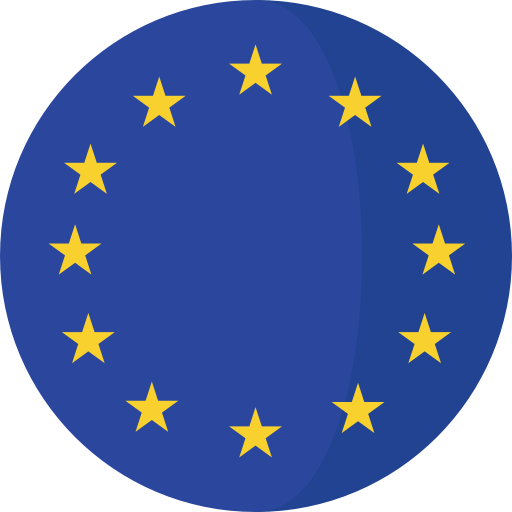 European Union
European Union
 Gitanas Nausėda
Gitanas Nausėda
 Karl Nehammer
Karl Nehammer
 Klaus Johannis
Klaus Johannis
 Kyriakos Mitsotakis
Kyriakos Mitsotakis

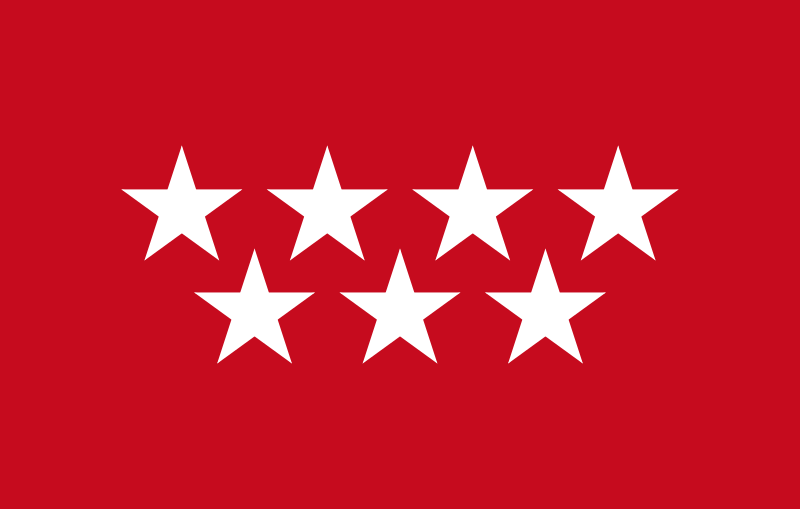 Madrid
Madrid
 Mark Rutte
Mark Rutte
 Mette Frederiksen
Mette Frederiksen
 Mexico
Mexico
 Nikolaj Denkow
Nikolaj Denkow
 Olaf Scholz
Olaf Scholz
 Austria
Austria

 Party and government
Party and government
 Pedro Sánchez
Pedro Sánchez
 Peru
Peru
 Petr Fiala
Petr Fiala
 Rio de Janeiro
Rio de Janeiro
 Spain
Spain
 Ulf Kristersson
Ulf Kristersson
 Ursula von der Leyen
Ursula von der Leyen
 Viktor Orbán
Viktor Orbán

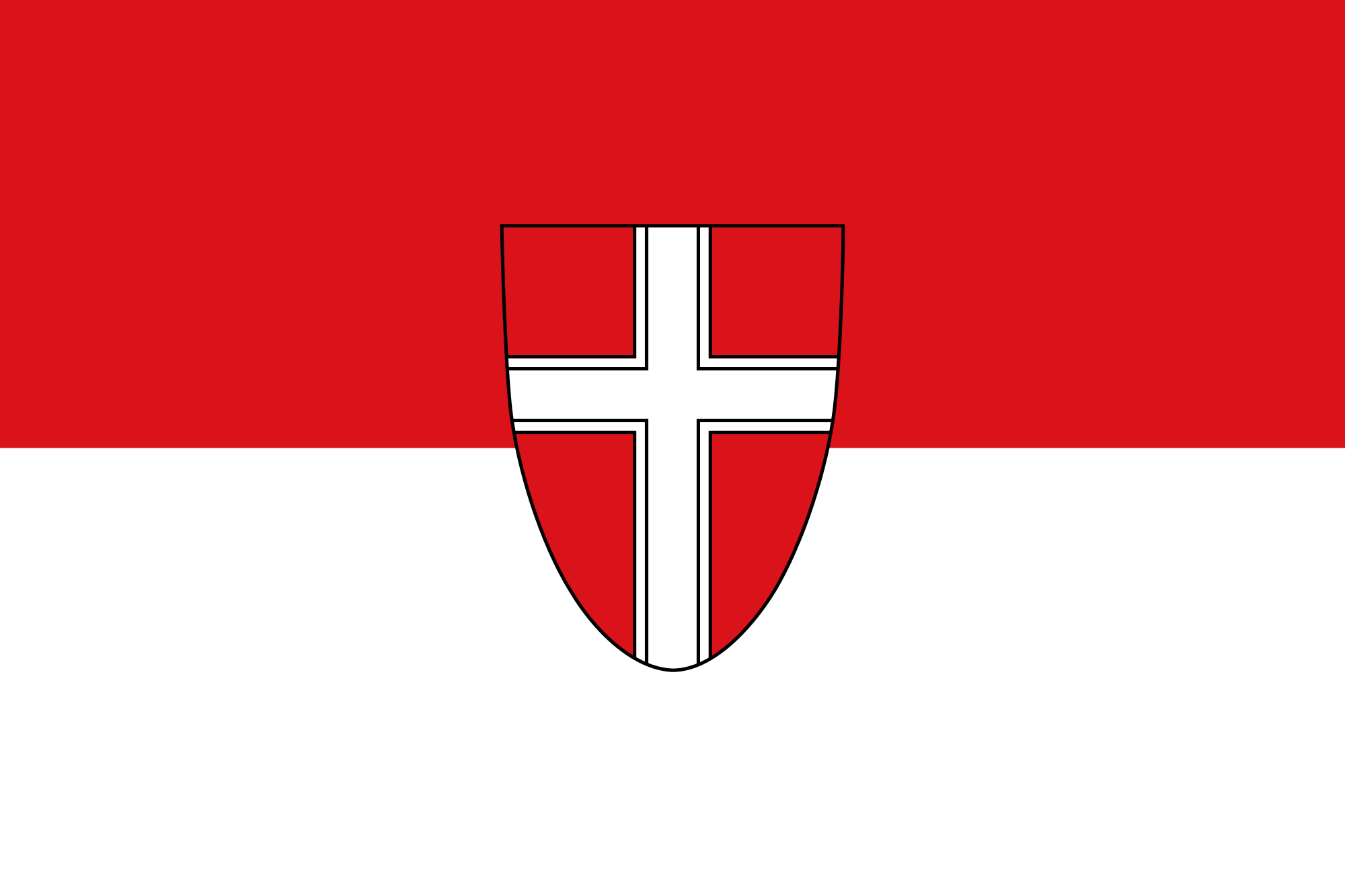 Vienna
Vienna
 Xavier Bettel
Xavier Bettel



 Belgium
Belgium
 Bulgaria
Bulgaria
 Denmark
Denmark
 Germany
Germany
 Estonia
Estonia

 European Union
European Union
 Member States of the European Union
Member States of the European Union
 Finland
Finland
 France
France

 History
History

 History
History

 History
History
 N 2000 - 2100 AD
N 2000 - 2100 AD
 Greece
Greece

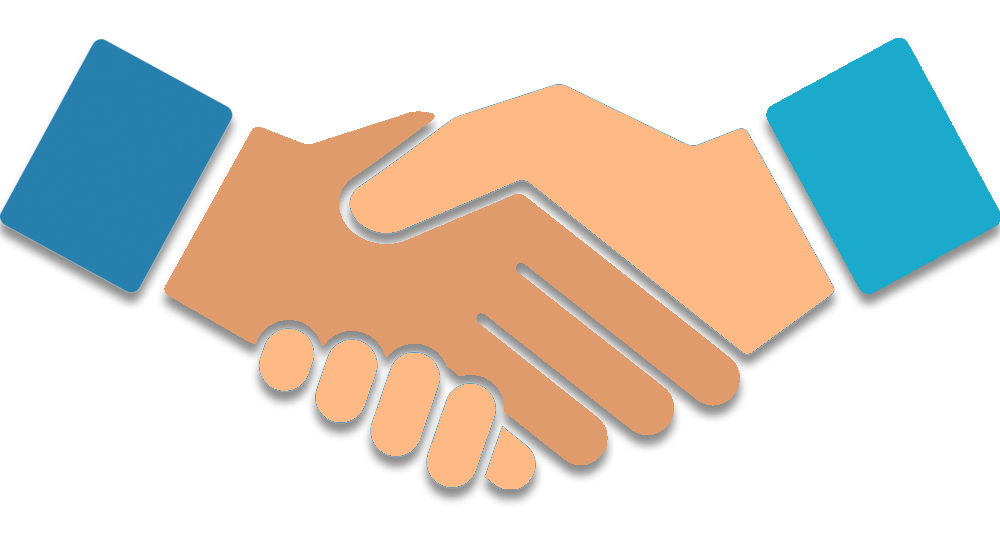 Hand in Hand
Hand in Hand
 Ireland
Ireland
 Italy
Italy
 Croatia
Croatia
 Latvia
Latvia
 Lithuania
Lithuania
 Luxembourg
Luxembourg
 Malta
Malta
 Netherlands
Netherlands
 Nobel prize
Nobel prize
 Nobel Peace Prize
Nobel Peace Prize
 Nobel prize
Nobel prize
 2012
2012
 Austria
Austria

 Party and government
Party and government
 Group of the twenty most important industrial and emerging countries
Group of the twenty most important industrial and emerging countries

 Party and government
Party and government
 Group of Seven,G7
Group of Seven,G7
 Poland
Poland
 Portugal
Portugal
 Romania
Romania
 Sweden
Sweden
 Slovakia
Slovakia
 Slovenia
Slovenia
 Spain
Spain
 Czech Republic
Czech Republic
 Hungary
Hungary

 Economy and trade
Economy and trade
 Free trade agreement
Free trade agreement
 Cyprus
Cyprus
Die Europäische Union (EU) ist ein Verbund von derzeit 28 Mitgliedstaaten. Außerhalb von Europa umfasst die EU auch einige Überseegebiete. Sie hat insgesamt mehr als eine halbe Milliarde Einwohner. Gemessen am Bruttoinlandsprodukt ist der EU-Binnenmarkt der größte gemeinsame Wirtschaftsraum[7] der Erde. Die EU stellt eine eigenständige Rechtspersönlichkeit dar und hat daher Einsichts- und Rederecht bei den Vereinten Nationen.[8] Die verbreitetsten Sprachen in der EU sind Englisch, Deutsch und Französisch. Im Jahre 2012 wurde die Europäische Union mit dem Friedensnobelpreis ausgezeichnet.[9]
Das politische System der EU, das sich im Zuge der europäischen Integration herausgebildet hat, basiert auf dem Vertrag über die Europäische Union und dem Vertrag über die Arbeitsweise der Europäischen Union. Es enthält sowohl überstaatliche als auch zwischenstaatliche Elemente. Während im Europäischen Rat und im Rat der Europäischen Union die einzelnen Staaten mit ihren Regierungen vertreten sind, repräsentiert das Europäische Parlament bei der Rechtsetzung der EU unmittelbar die Unionsbürger. Die Europäische Kommission als Exekutivorgan und der EU-Gerichtshof als Rechtsprechungsinstanz sind ebenfalls überstaatliche Einrichtungen.
Die Anfänge der EU gehen auf die 1950er-Jahre zurück, als zunächst sechs Staaten die Europäische Wirtschaftsgemeinschaft (EWG) gründeten. Eine gezielte wirtschaftliche Verflechtung sollte militärische Konflikte für die Zukunft verhindern und durch den größeren Markt das Wirtschaftswachstum beschleunigen und damit den Wohlstand der Bürger steigern. Im Lauf der folgenden Jahrzehnte traten in mehreren Erweiterungsrunden weitere Staaten den Gemeinschaften (EG) bei. Ab 1985 wurden mit dem Schengener Übereinkommen die Binnengrenzen zwischen den Mitgliedsländern geöffnet. Nach dem Fall des Eisernen Vorhangs beziehungsweise der Auflösung des Ostblockes im Jahr 1989 änderte sich die geopolitische Lage in Europa grundlegend, womit sich Möglichkeiten zur Vertiefung der Integration, aber auch zur Vorbereitung von Erweiterungen im Osten ergaben. Mit dem Vertrag von Maastricht wurde 1992 die Europäische Union gegründet, die damit Zuständigkeiten in nichtwirtschaftlichen Politikbereichen bekam. In mehreren Reformverträgen, zuletzt im Vertrag von Lissabon, wurden die überstaatlichen Zuständigkeiten der EU ausgebaut und die demokratische Verankerung der politischen Entscheidungsprozesse auf Unionsebene nachgebessert, vor allem durch nochmalige Stärkung der Stellung des Europäischen Parlaments. Eine europäische Öffentlichkeit und Identität als Voraussetzung einer supranationalen Volkssouveränität bildet sich indes erst allmählich und nicht ohne Gegenströmungen heraus. Seit den 1980er-Jahren nahm mit den Kompetenzerweiterungen und dem damit einhergehenden Bedeutungsgewinn der EU auch die öffentliche Debatte über die Verfasstheit der EU an Intensität zu; dabei wurden auch EU-skeptische Positionen vermehrt artikuliert. Im Vertrag von Lissabon wurden im Jahr 2007 auch Austrittsszenarien geregelt.
Von den 28 EU-Staaten bilden 19 Staaten eine Wirtschafts- und Währungsunion. Im Jahr 2002 wurde eine gemeinsame Währung für diese Länder, der Euro, eingeführt. Im Rahmen des Raums der Freiheit, der Sicherheit und des Rechts arbeiten die EU-Mitgliedstaaten in der Innen- und Justizpolitik zusammen. Durch die gemeinsame Außen- und Sicherheitspolitik bemühen sie sich um ein gemeinsames Auftreten gegenüber Drittstaaten. Zukunftsbezogenes gemeinsames Handeln ist Gegenstand der Initiative Europa 2020, zu der unter anderem die Digitalpolitik gehört. Die Europäische Union hat Beobachterstatus in der G7, ist Mitglied in der G20 und vertritt ihre Mitgliedstaaten in der Welthandelsorganisation.
Die EU war 2016 der weltweit zweitgrößte Wirtschaftsraum nach nominalem (hinter den USA) sowie kaufkraftbereinigten Bruttoinlandsprodukt (hinter der Volksrepublik China). Als Staatenverbund ist sie der größte Güterproduzent und die größte Handelsmacht der Welt. Die Mitgliedsstaaten haben einen der höchsten Lebensstandards weltweit, wobei es jedoch auch innerhalb der EU deutliche Unterschiede zwischen einzelnen Ländern gibt. Im Index der menschlichen Entwicklung galten 2015 26 der 28 Mitgliedstaaten als „sehr hoch“ entwickelt.
Nach der Osterweiterung in den Jahren 2004 und 2007 ist die Europäische Union infolge der Finanzkrise ab 2007 und durch die Flüchtlingskrise ab 2015 in verschiedenen Mitgliedsstaaten einer zunehmenden EU-Skepsis von Teilen der Bevölkerung ausgesetzt, die sich unter anderem in dem Brexit-Referendum von 2016 niedergeschlagen hat. Unter dem Eindruck der Krisenerscheinungen und der Zunahme von rechtspopulistischen Tendenzen in den Mitgliedstaaten der Union wird die EU-Finalitätsdebatte neuerlich intensiv geführt. Einen auf die nähere Zukunft gerichteten, stark beachteten Reformplan hat der französische Staatspräsident Emmanuel Macron mit seiner Initiative für Europa vorgelegt.
欧洲联盟(英语:European Union;法语:Union européenne;德语:Europäische Union),简称欧盟(英语:EU;法语:UE;德语:EU),是根据1993年生效的《马斯特里赫特条约》(也称《欧洲联盟条约》)所建立的政治经济联盟,现拥有28个成员国,正式官方语言有24种。规范欧盟的条约经过多次修订,目前欧盟的运作方式依照《里斯本条约》。政治上所有成员国均为议会民主国家(2008年《经济学人》民主状态调查);经济上为仅次于以美国为首的北美自由贸易区的世界上第二大经济实体,德国、法国及意大利为欧盟三大核心成员国;军事上绝大多数欧盟成员国均为北大西洋公约组织成员。
欧盟的历史可追溯至1952年建立的欧洲煤钢共同体,当时只有六个成员国。1958年又成立了欧洲经济共同体和欧洲原子能共同体,1967年统合在欧洲各共同体之下,1993年又统合在欧洲联盟之下,欧盟已经渐渐地从贸易实体转变成经济和政治联盟。同时,欧洲经济共同体和后来的欧盟在1973年至2013年期间进行了八次扩大,成员国从6个增至28个。起初推动欧盟建立的动机,是渴望重建二战后损失惨重的欧洲,以及担忧欧洲会再度陷入战争泥潭。
欧盟的主要机构有欧洲委员会(成员国家首脑组成)、欧盟理事会(成员国家部长组成的欧盟的上议院)、欧盟委员会(欧盟的行政机构)、欧洲议会(欧盟的众议院,唯一的直接民选机构)、欧洲法院、欧洲中央银行等。此外,欧洲原子能共同体也在欧洲共同体的管辖范围之内,但在法律上是独立于欧盟的国际组织。
欧元由28个成员国中的19个采纳为流通货币;《申根条约》取消了部分成员国之间的边境管制,目前已有22个欧盟成员国和4个非成员国实施。
目前欧盟的主要议题有英国脱欧、欧盟的扩大、落实《里斯本条约》、全球暖化问题、非欧元区成员国加入欧元区、主权债务危机、移民危机等。
欧州連合(おうしゅうれんごう、英: European Union、略称:EU)は、マーストリヒト条約により設立されたヨーロッパの地域統合体。
欧州連合では欧州連合条約の発効前に調印されていた単一欧州議定書によって市場統合が実現し、またシェンゲン協定により域内での国境通過にかかる手続きなどの負担を大幅に削減した。さらに欧州連合条約発効後によって外交・安全保障分野と司法・内務分野での枠組みが新たに設けられ、ユーロの導入による通貨統合が進められている。このほかにも欧州議会の直接選挙が実施されたり、欧州連合基本権憲章が採択されたりするなど、欧州連合の市民の概念が具現化されつつある。加盟国数も欧州経済共同体設立を定めたローマ条約発効時の6か国から、2013年7月のクロアチア加盟により28か国にまで増えている。
The European Union (EU) is a political and economic union of 28 member states that are located primarily in Europe.[13] It has an area of 4,475,757 km2 (1,728,099 sq mi) and an estimated population of over 510 million. The EU has developed an internal single market through a standardised system of laws that apply in all member states in those matters (only) where members have agreed to act as one. EU policies aim to ensure the free movement of people, goods, services and capital within the internal market,[14] enact legislation in justice and home affairs and maintain common policies on trade,[15] agriculture,[16] fisheries and regional development.[17] For travel within the Schengen Area, passport controls have been abolished.[18] A monetary union was established in 1999 and came into full force in 2002 and is composed of 19 EU member states which use the euro currency.
The EU and European citizenship were established when the Maastricht Treaty was enacted in 1993.[19] The EU traces its origins to the European Coal and Steel Community (ECSC) and the European Economic Community (EEC), established, respectively, by the 1951 Treaty of Paris and 1957 Treaty of Rome. The original members of what came to be known as the European Communities were the Inner Six: Belgium, France, Italy, Luxembourg, the Netherlands, and West Germany. The Communities and its successors have grown in size by the accession of new member states and in power by the addition of policy areas to its remit. The latest major amendment to the constitutional basis of the EU, the Treaty of Lisbon, came into force in 2009. While no member state has left the EU or its predecessors, the United Kingdom signified an intention to leave after a membership referendum in June 2016 and is negotiating its withdrawal.
The European Union provides more foreign aid than any other economic union.[20] Covering 7.3% of the world population,[21] the EU in 2017 generated a nominal gross domestic product (GDP) of 19.670 trillion US dollars, constituting approximately 24.6% of global nominal GDP[22] and 16.5% when measured in terms of purchasing power parity.[23] Additionally, 27 out of 28 EU countries have a very high Human Development Index, according to the United Nations Development Programme. In 2012, the EU was awarded the Nobel Peace Prize.[24] Through the Common Foreign and Security Policy, the EU has developed a role in external relations and defence. The union maintains permanent diplomatic missions throughout the world and represents itself at the United Nations, the World Trade Organization, the G7 and the G20. Because of its global influence, the European Union has been described as an emerging superpower.[25]
L'Union européenne (UE)Note 4 est une association politico-économique sui generis de vingt-huit États européens qui délèguent ou transmettent par traité l’exercice de certaines compétences à des organes communautaires5,6. Elle s'étend sur un territoire de 4,5 millions de kilomètres carrés7, est peuplée de plus de 512 millions d'habitants3 et est la deuxième puissance économique mondiale en termes de PIB nominal derrière les États-Unis8,9,10. L’Union européenne est régie par le traité de Maastricht (TUE) et le traité de Rome (TFUE), dans leur version actuelle, depuis le 1er décembre 2009 et l'entrée en vigueur du traité de Lisbonne. Sa structure institutionnelle est en partie supranationale et en partie intergouvernementale : le Parlement européen est élu au suffrage universel direct, tandis que le Conseil européen et le Conseil de l'Union européenne (informellement le « Conseil des ministres ») sont composés de représentants des États membres. Le président de la Commission européenne est pour sa part élu par le Parlement sur proposition du Conseil européen. La Cour de justice de l'Union européenne est chargée de veiller à l'application du droit de l'Union européenne.
La déclaration du 9 mai 1950 de Robert Schuman, alors ministre français des Affaires étrangères, est considérée comme le texte fondateur de la construction européenne. Sous l’impulsion de personnalités politiques surnommées les « pères de l'Europe »11, comme Konrad Adenauer, Jean Monnet et Alcide De Gasperi, six États créent en 1951 la Communauté européenne du charbon et de l'acier. Après l’échec d'une Communauté européenne de défense en 1954, une Communauté économique européenne est instaurée en 1957 par le traité de Rome. La coopération économique est approfondie par l’Acte unique européen en 1986. En 1992, le traité de Maastricht prend la suite de l’Acte unique et institue une union politique qui prend le nom d’Union européenne et qui prévoit la création d'une union économique et monétaire dotée d’une monnaie unique : l’euro. Instituée en 1999, la zone euro compte dix-neuf États en 2017. De nouvelles réformes institutionnelles sont introduites en 1997 et en 2001. À la suite de l’échec d’un projet de constitution européenne après le refus par référendum des peuples français et néerlandais, les institutions sont à nouveau réformées en 2009 par le traité de Lisbonne pour y intégrer les mesures prévues par ce projet de constitution.
Depuis la formation de la CEE, le nombre d'États membres est passé de 6 à 28. Les membres fondateurs de la Communauté économique européenne, en 1957, sont l'AllemagneNote 5, la Belgique, la France, l'Italie, le Luxembourg et les Pays-Bas. Ils sont rejoints en 1973 par trois membres de l'Association européenne de libre-échange : le Danemark, l'Irlande et le Royaume-Uni. L'Union s'élargit vers le sud avec d'abord l'adhésion de la Grèce en 1981, puis celle de l'Espagne et du Portugal en 1986. Entretemps, en 1985, le Groenland a décidé de se retirer en ratifiant le Traité sur le Groenland et a désormais le statut de pays et territoire d'outre-mer associé. Avec la fin de la Guerre froide, la partie orientale de l'Allemagne rejoint la Communauté économique européenne en 1990Note 6. L'Union européenne intègre en 1995 des États neutres : l'Autriche, la Finlande et la Suède. En 2004, dix nouveaux États, en majorité issus du bloc de l'Est, s'ajoutent aux quinze déjà membres : Chypre, l'Estonie, la Hongrie, la Lettonie, la Lituanie, Malte, la Pologne, la Slovaquie, la Slovénie et République tchèque. Deux États supplémentaires, la Bulgarie et la Roumanie, complètent en 2007 ce cinquième élargissement, Enfin, en 2013, la Croatie rejoint l'Union12. Le 23 juin 2016, les citoyens britanniques votent en majorité pour la sortie du Royaume-Uni de l'Union européenne dans le cadre d'un référendum. La procédure de retrait est enclenchée le 29 mars 2017 par l'activation de l'article 50 du traité sur l'Union européenne.
Le 12 octobre 2012, le prix Nobel de la paix est attribué à l'Union européenne pour « sa contribution à la promotion de la paix, la réconciliation, la démocratie et les droits de l'Homme en Europe »13.
L'Unione europea (abbreviata in UE o Ue, pron. /ˈue/[12]) è un'organizzazione internazionale politica ed economica a carattere sovranazionale, che comprende 28 paesi membri indipendenti e democratici. La sua formazione risale al trattato di Roma del 25 marzo 1957, la denominazione attuale al trattato di Maastricht del 7 febbraio 1992 (entrato in vigore il 1º novembre 1993), e l'istituzione ufficiale al 2002 con l'avvento della valuta unica ed il successivo trattato di Lisbona, dopo un lungo percorso intrapreso dalle Comunità europee precedentemente esistenti e attraverso la stipulazione di numerosi trattati, che hanno contribuito al processo di integrazione europea.
Questa garantisce la libera circolazione di persone, merci, servizi e capitali all'interno del suo territorio attraverso un mercato europeo comune e la cittadinanza dell'Unione europea, promuove la pace, i valori e il benessere dei suoi popoli, lotta contro l'esclusione sociale e la discriminazione, favorisce il progresso scientifico e tecnologico e mira alla stabilità politica, alla crescita economica e alla coesione sociale e territoriale tra gli stati membri[13], cercando di attenuare le differenze socio-economiche tra i vari stati membri e incrementarne il benessere socio-economico.
Le competenze dell'Unione europea spaziano dalle politiche economiche (agricoltura e commercio) agli affari esteri, alla difesa e alla protezione ambientale, con una politica agraria comune, una politica estera comune e la presenza di fondi strutturali per il raggiungimento degli obiettivi socio-economici preposti. In alcuni di questi campi tali funzioni la rendono dunque simile a una federazione di stati (per es. per quanto riguarda gli affari monetari o le politiche ambientali), mentre in altri settori l'Unione è più vicina a una confederazione (mancando di una Costituzione, ordinamento giuridico, politica interna e politica industriale comuni) o a un'organizzazione politica sovranazionale (come per la politica estera).
Le politiche di unione economica e monetaria dell'Unione europea hanno portato nel 2002 all'introduzione di una moneta unica, l'euro, attualmente adottato da 19 stati dell'Unione, che formano la cosiddetta eurozona, con una politica monetaria comune regolata dalla Banca centrale europea (BCE).
Il 12 ottobre 2012 è stata insignita del premio Nobel per la pace, con la seguente motivazione: «per oltre sei decenni ha contribuito all'avanzamento della pace e della riconciliazione, della democrazia e dei diritti umani in Europa».[14]
La Unión Europea (UE) es una comunidad política de derecho constituida en régimen sui géneris de organización internacional nacida para propiciar y acoger la integración y gobernanza en común de los Estados y los pueblos de Europa. Está compuesta por veintiocho Estados europeos y fue establecida con la entrada en vigor del Tratado de la Unión Europea (TUE) el 1 de noviembre de 1993.6
Con ese acto, la supraestructura «Unión Europea» aunaba y se fundaba sobre las tres Comunidades Europeas preexistentes —la Comunidad Europea del Carbón y del Acero (CECA), la Comunidad Europea de la Energía Atómica (Euratom) y la Comunidad Económica Europea (CEE/CE)— y les añadía la política exterior común y la cooperación judicial y policial, formando un sistema complejo conocido como «los tres pilares». Sin embargo, con la entrada en vigor el 1 de diciembre de 2009 del Tratado de Lisboa, la Unión Europea sucedió, por completo aunque con ciertas particularidades, a las Comunidades Europeas y asumió con ello su personalidad jurídica única como sujeto de derecho internacional.7
La Unión Europea ha desarrollado un sistema jurídico y político, el comunitario europeo, único en el mundo, que se rige por mecanismos y procedimientos de funcionamiento interno complejos, que se han extendido y evolucionado a lo largo de su historia hasta conformar, en la actualidad, un sistema híbrido de gobierno transnacional difícilmente homologable que combina elementos próximos a la cooperación multilateral, si bien fuertemente estructurada e institucionalizada, con otros de vocación netamente supranacional, regidos ambos por una dinámica de integración regional muy acentuada.
Todo esto desemboca en una peculiarísima comunidad de Derecho, cuya naturaleza jurídica y política es muy discutida, si bien sus elementos fundacionales y su evolución histórica, todavía abierta, apuntan, en el presente, a una especial forma de moderna confederación o gobernanza supranacional, acusadamente institucionalizada y con una inspiración histórico-política de vocación federal —en el sentido de un federalismo internacional n
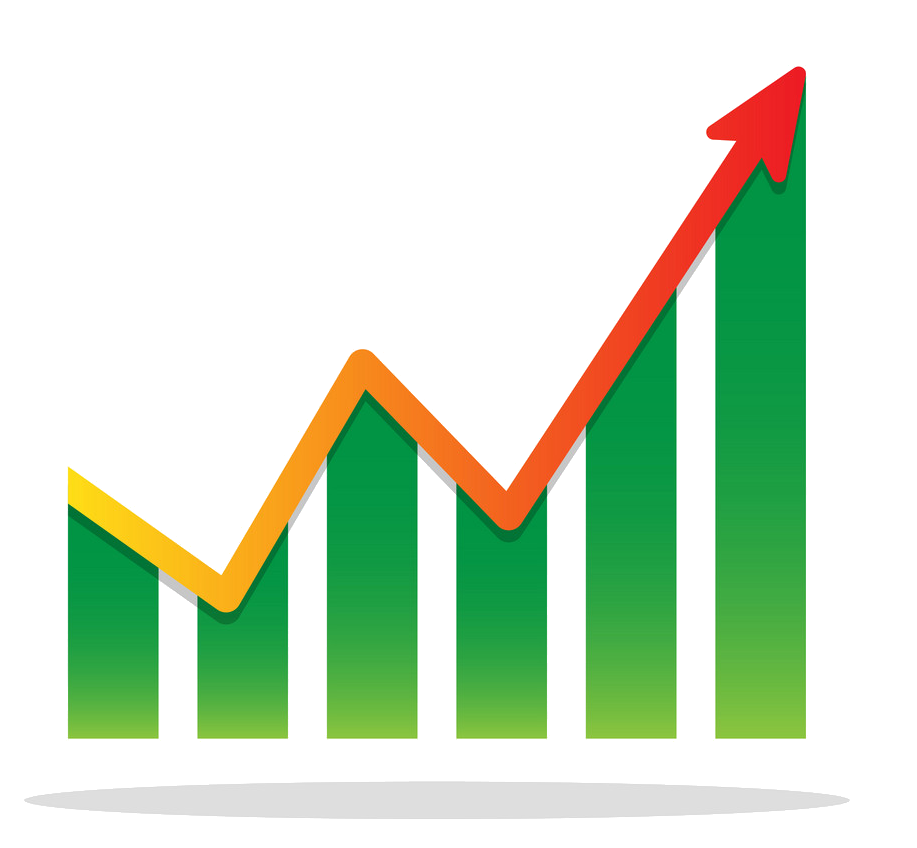 Financial
Financial
 Important International Organizations
Important International Organizations
